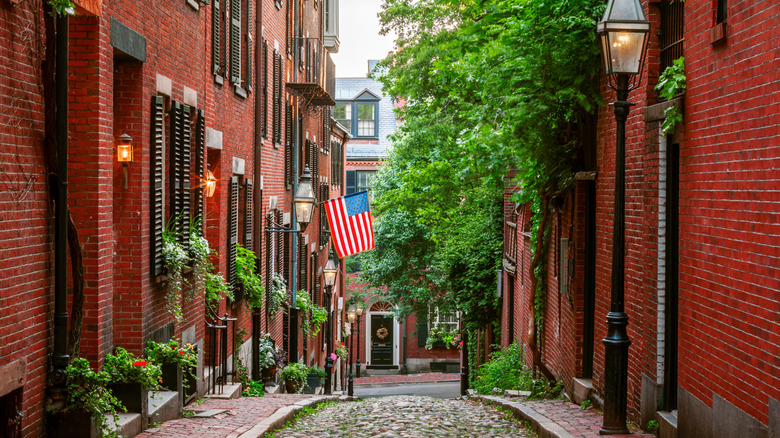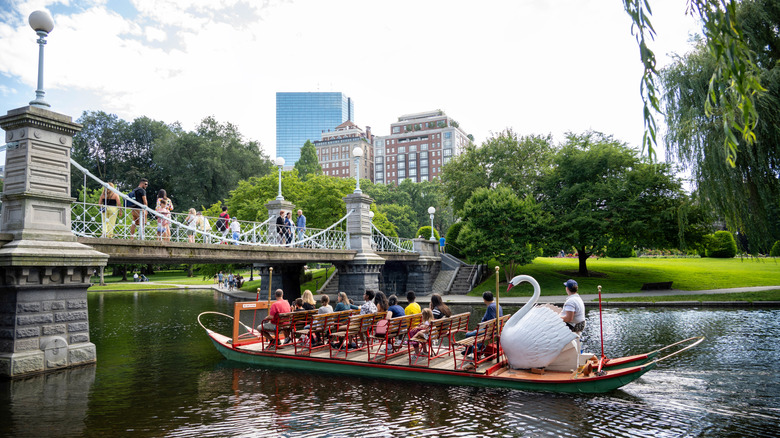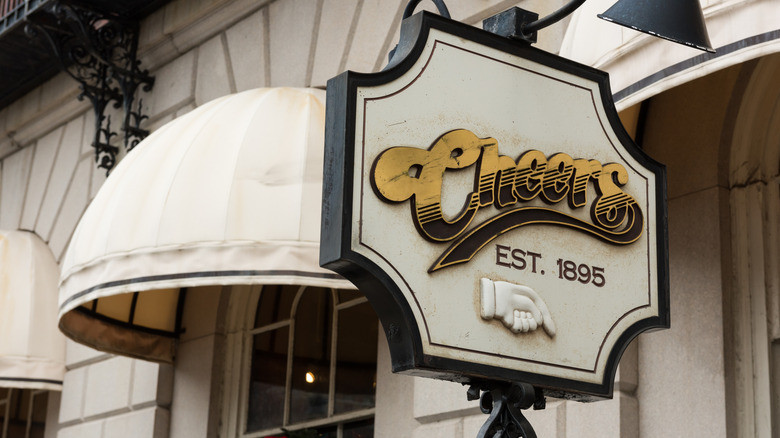Boston's Walkable, Historic Neighborhood Has America's Oldest Public Park And Gas-Lit Streets
It's picturesque with red brick row houses on cobblestone streets. Gas lamps light the way as ivy climbs the walls in this walkable neighborhood full of specialty shops and trendy restaurants. One of the most expensive residential neighborhoods in Boston, Beacon Hill has all-American charm and deep historical roots, making it one of the most popular areas to visit in the city.
While it's certainly a beautiful neighborhood and very simple to get to via the MBTA (The Green Line and Red Line both stop at Park Street Station) it's also important to understand the history of the area while you're exploring. In the 1800s, the south side of Beacon Hill was where the wealthiest residents lived. Ironically, the north side was also where some of the poorest immigrants, working class, and free African Americans lived. A safe space for African Americans and abolitionists (both Black and white), the north side of Beacon Hill was also a key stop on the Underground Railroad, specifically in the home of Lewis and Harriet Hayden. Escaped slaves themselves, the Haydens provided refuge to hundreds of African Americans on their journey to freedom. The Black Heritage Trail, the Museum of African American History, and Boston African American National Historic Site all delve into the significance of Beacon Hill during this time period, so make time for those.
Much like the past, today's Beacon Hill is also a neighborhood of contrasts. While it has more than its fair share of extravagance, Beacon Hill also has plenty of free and affordable sights that are some of the most widely visited landmarks in town. For an example of the latter: Beacon Hill borders Boston Common, America's oldest public park, which is free and open to all.
Must-do-and-see sights
What started as 44-acres of grazing pasture for livestock, has evolved into the 50-acre beloved public park known as Boston Common. Founded in 1634, Boston Common is as much of a part of American history as many of the other landmarks in the city.
Both the Colonial militia and the British Redcoats assembled at the Common at different points during the Revolutionary War. Once the war was over, George Washington and other leaders celebrated America's newfound independence on the Common. It's been the site of countless political demonstrations over the decades, including anti-Vietnam War protests and civil rights speeches by Martin Luther King Jr. Today's Boston Common has walking paths, fountains, ballfields, and the Frog Pond where winter ice skating is popular. A significant historical landmark and equally important greenspace, it's a must-visit.
Another must-do is The Freedom Trail. The 2.5-mile red-lined trail weaves through downtown Boston (including Back Bay, one of Boston's most beautiful Paris-inspired neighborhoods). The trail starts at Boston Common and passes through 15 additional important historical stops that include Faneuil Hall, the Boston Massacre site, Paul Revere House, and Old Corner Bookstore which published early editions of several classics including "Uncle Tom's Cabin," "The Scarlet Letter," and "Little Women."
Elsewhere in Beacon Hill, there's Acorn Street, originally called Kitchen Street in the 1820s. Because it is one of the most well-preserved streets in Boston, it offers an authentic glimpse into the past. Then there's Louisburg Square, where Louisa May Alcott resided for a time. Designed as a model for homes in the 1800s, Louisburg Square includes gas-lit lamps, cobblestone streets, and a private park in the center.
The most famous neighborhood bar
One of the most recognizable bars in Boston is Cheers. Perhaps you've heard of it from the classic 1980s sitcom? The one where everybody knows your name?
While the bar may be called Cheers now, it wasn't always. Originally, it was a neighborhood bar called the Bull & Finch Pub, which was founded in 1969. According to local folklore, the producers of the TV sitcom came to Boston to look for a bar they could use as a template for their then-in-development show's imaginary bar. They visited the Bull & Finch, and after scouring many other bars in Boston, they returned to the Bull & Finch, convinced they had found their inspiration. When "Cheers" launched, an establishing shot of the bar was included, giving it instant notoriety.
While the vibe of the bar influenced the show, the interiors didn't match, much to the dismay of tourists. Eventually, the owner made a replica of the TV bar set on the ground floor, changed the name of the bar to Cheers Beacon Hill (including the fictional bar's founding year of 1895), and even named menu items after characters from the show. Now a major tourist stop, complete with Cheers-branded items in a gift shop. Maybe it's less of a neighborhood bar than a photo op these days, but it's still beloved by fans of the show.
If you want to find a legit neighborhood bar in Beacon Hill, however, try the Sevens Ale House or Emmets Pub & Restaurant. For something a little more upscale, 1928 Beacon Hill has Prohibition-Era speakeasy vibes.


